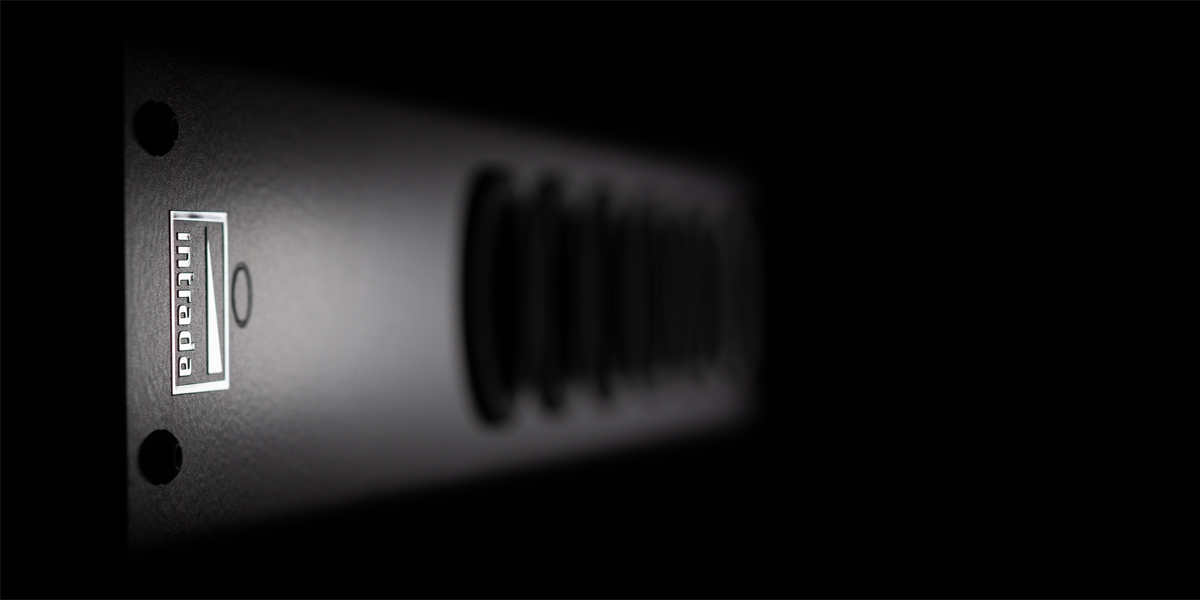Although Intrada’s founder Michał Gogulski had a very good start with his introductory speaker set Erik, he didn’t stop there. His own power distributor Intrada S6 was launched just recently and sent my way shortly after. Enjoy!
Introduction
If the audio industry had an official guidebook, I reckon that the synergy chapter would be second only to pages with basic dos and don’ts. From it one could learn how a system’s components matched thoughtfully to elevate one another ultimately make good sound, and how it’s never about just one specific product but their conjoined effort. To many seasoned enthusiasts this is no secret knowledge but common-sense stuff really, and also the reason why they see their setups as complex integral organisms more than anything else. We’re exposed not only to loudspeakers, but also hardware before them and a listening space itself. The better all these essentials fit together, the grander the outcome.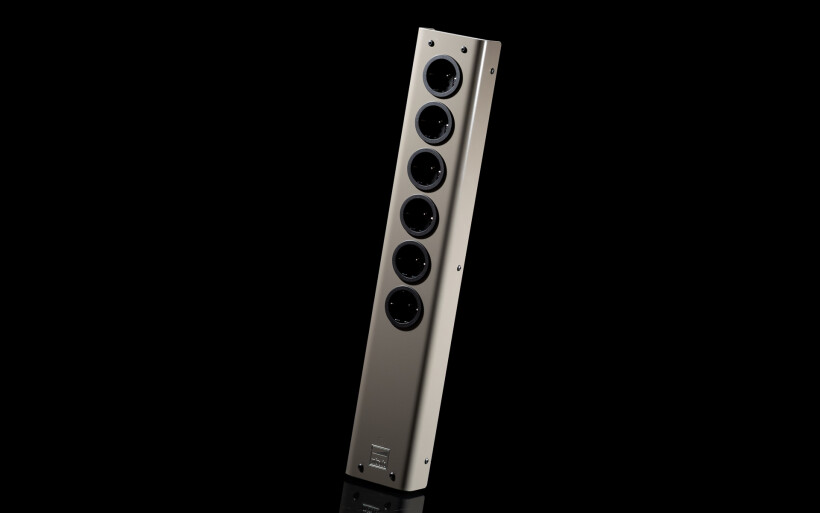 Two fine examples of manufacturers who follow the above-described holistic path are Kazuo Kiuchi’s Combak Corporation with its brands Enacom, Harmonix, Hijiri and Reimyo, and Audio Group Denmark with banners Aavik, Ansuz and Børresen. These respective rosters include components meant to sell together and form entire systems known for wicked performance, whereas distributors strive for the alike-tiered synergy by carefully blending products of various origin. Over the years I’ve learned that the more compact such portfolios are, the greater the odds of finding non-mainstream boutique jewels usually beyond the scope of domestic heavy hitters.
Two fine examples of manufacturers who follow the above-described holistic path are Kazuo Kiuchi’s Combak Corporation with its brands Enacom, Harmonix, Hijiri and Reimyo, and Audio Group Denmark with banners Aavik, Ansuz and Børresen. These respective rosters include components meant to sell together and form entire systems known for wicked performance, whereas distributors strive for the alike-tiered synergy by carefully blending products of various origin. Over the years I’ve learned that the more compact such portfolios are, the greater the odds of finding non-mainstream boutique jewels usually beyond the scope of domestic heavy hitters.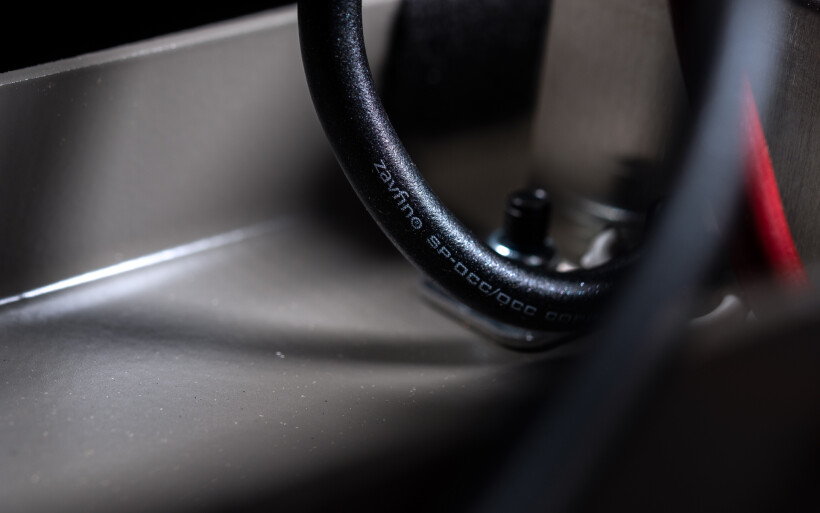 The local Intrada house represents brands Avid, Bassocontinuo, bFly, EMT, Mastersound, Nagra, Serblin & Son, Stenheim and Zavfino, so clearly fits that petite distribution profile full of treasures. Although its founder Michał Gogulski seems perfectly happy with his current lineup, he intends to fill its remaining blank spots with products released under his own flag. The introductory result of this master plan – Intrada Erik speakers – turned out great to say the least, which naturally left me curious about Michał’s next developments. Today’s the day, a power bar baptized Intrada S6 was sent my way.
The local Intrada house represents brands Avid, Bassocontinuo, bFly, EMT, Mastersound, Nagra, Serblin & Son, Stenheim and Zavfino, so clearly fits that petite distribution profile full of treasures. Although its founder Michał Gogulski seems perfectly happy with his current lineup, he intends to fill its remaining blank spots with products released under his own flag. The introductory result of this master plan – Intrada Erik speakers – turned out great to say the least, which naturally left me curious about Michał’s next developments. Today’s the day, a power bar baptized Intrada S6 was sent my way.
Build
Past reviewing Intrada Erik I expected to see next either its beefier dearer sibling, or something along the speaker lines in general. Since this didn’t happen, it seemed only fair to start today’s story by asking how its subject actually came to be. Michał happily obliged by stressing the importance of clean power in audio, which was hardly a shock given more than two decades under his distributor belt. The man also represented the company IsoTek before its departure to a bigger local distributor several springs ago. That left an opening in Intrada’s offer that had to be quickly addressed, but finding a suitable replacement wasn’t a trivial task as it turned out.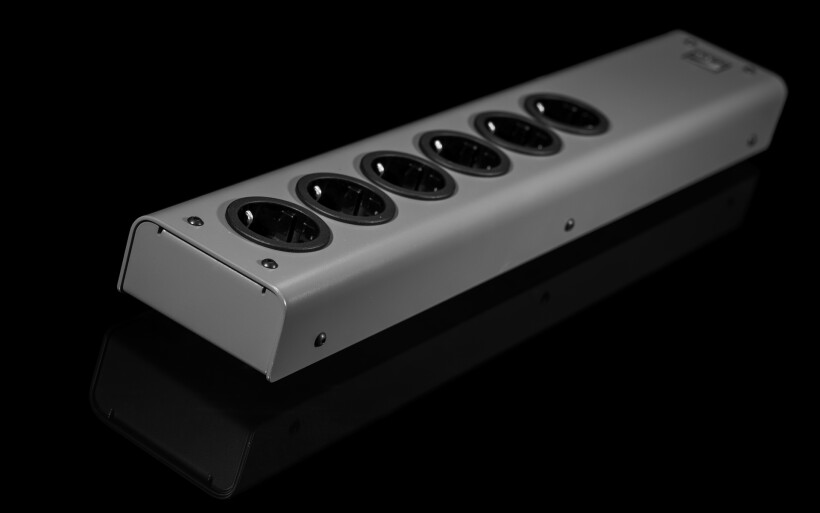 Michał explained that power components interesting to him either already had distribution homes here in Poland, or didn’t make commercial sense. The decision was made to simply wait for just the right opportunity to unfold, and two did rather sooner than later; the Canadian manufacturer Zavfino officially joined Intrada’s ranks, and Michał’s experience with power bars by the local brand Enerr was promising. Next came the idea to rewire one its distributor box with the former’s conductor, track sonic shifts and possibly move from there. Long story short, Intrada S6 is the result, but customized a fair bit more than just this one rework.
Michał explained that power components interesting to him either already had distribution homes here in Poland, or didn’t make commercial sense. The decision was made to simply wait for just the right opportunity to unfold, and two did rather sooner than later; the Canadian manufacturer Zavfino officially joined Intrada’s ranks, and Michał’s experience with power bars by the local brand Enerr was promising. Next came the idea to rewire one its distributor box with the former’s conductor, track sonic shifts and possibly move from there. Long story short, Intrada S6 is the result, but customized a fair bit more than just this one rework.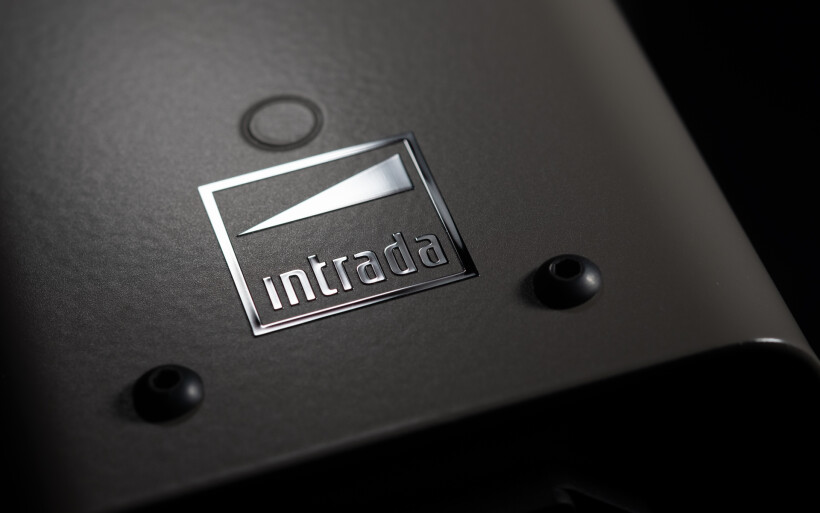 It’s no news that proper engineering expertise is essential for turning rough ideas into finished products that safely work as intended. Although Michał doesn’t possess that kind of deep tech background, he knows just the specialists who do and that’s key. Intrada’s entire speaker R&D he entrusted to Grzegorz Matusiak of APS, whilst this report’s design was outsourced to Piotr Kwiatkowski, who owns the local manufacture Audiothlon and its two brands; Enerr and Equilibrium. But most importantly, Michał had a firm idea how Intrada S6 as he envisioned it should behave, and he also knew that this project was realistic prior to financially committing to it.
It’s no news that proper engineering expertise is essential for turning rough ideas into finished products that safely work as intended. Although Michał doesn’t possess that kind of deep tech background, he knows just the specialists who do and that’s key. Intrada’s entire speaker R&D he entrusted to Grzegorz Matusiak of APS, whilst this report’s design was outsourced to Piotr Kwiatkowski, who owns the local manufacture Audiothlon and its two brands; Enerr and Equilibrium. But most importantly, Michał had a firm idea how Intrada S6 as he envisioned it should behave, and he also knew that this project was realistic prior to financially committing to it.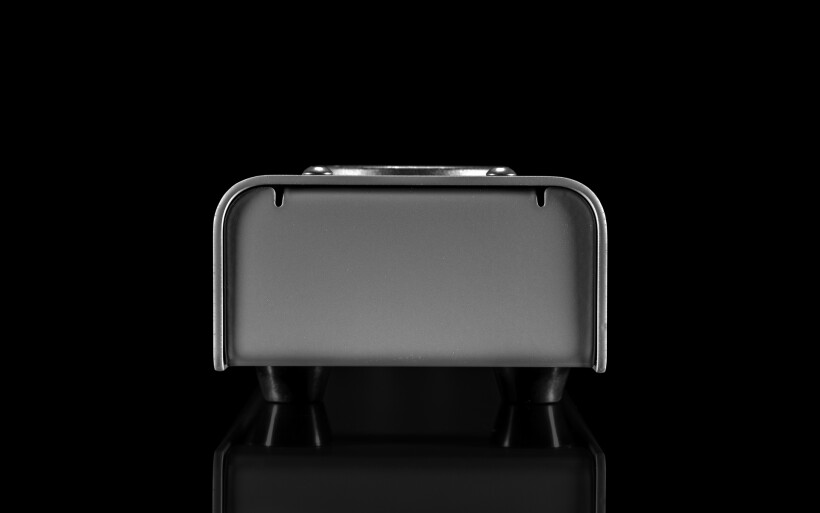 Intrada S6 isn’t as tall as Enerr’s €1’000 Zero Compact 6S model, but their indisputable visual similarities imply that the latter box had to be the donor for this newcomer, which is no crime given its enjoyably light price tag and the same manufacturer of both. This regularly shaped and sized passive power distributor is free from on/off switches, fuses, DC blocker circuitry, MOVs, isolation transformers and most other components known for crippling sound quality. Such designer topology prioritizes gearing for stout sonics, but at a cost of no protection against voltage spikes and unfortunate accidents that might follow. Today’s address thus isn’t the one if safety is your primary concern, but lack of non-essentials inside purist distributors such as Intrada S6 effectively amplifies their performance. Knowing this I’m perfectly fine with functional limitations of Michał’s affordable take on this passive breed, but you might not.
Intrada S6 isn’t as tall as Enerr’s €1’000 Zero Compact 6S model, but their indisputable visual similarities imply that the latter box had to be the donor for this newcomer, which is no crime given its enjoyably light price tag and the same manufacturer of both. This regularly shaped and sized passive power distributor is free from on/off switches, fuses, DC blocker circuitry, MOVs, isolation transformers and most other components known for crippling sound quality. Such designer topology prioritizes gearing for stout sonics, but at a cost of no protection against voltage spikes and unfortunate accidents that might follow. Today’s address thus isn’t the one if safety is your primary concern, but lack of non-essentials inside purist distributors such as Intrada S6 effectively amplifies their performance. Knowing this I’m perfectly fine with functional limitations of Michał’s affordable take on this passive breed, but you might not.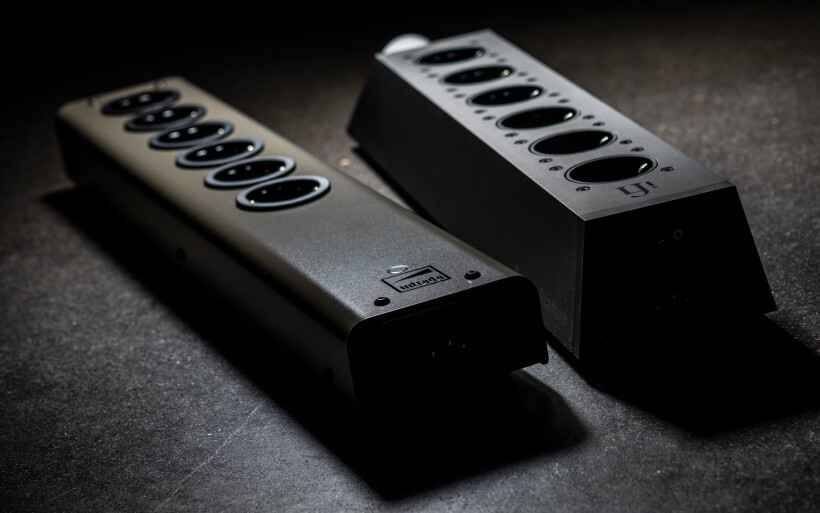 Passive power bars incorporate just few internals so might seem basic, but that’s not the case. Their makers know well that attention to small things and just few optimized components net proper results, and Intrada S6 is no exception on this front. Its surprisingly hefty exterior made of 2mm thick bent steel sheets feels more premium and robust than iFi’s a bit costlier PowerStation, and also mechanically more grounded. This flat body is heavy enough to accept very thick heavy power cords without flipping over. One IEC inlet sits on the side, whereas six Berker’s outlets with silver and then gold-plated contacts are found on top. Turning Schuko plugs to keep phase in check is allowed. Bitumen bits fixed to the product’s already substantially weighty interior make it pleasantly dead upon knocking. Today’s overall assembly is top notch, on this count it’s a fully mature product.
Passive power bars incorporate just few internals so might seem basic, but that’s not the case. Their makers know well that attention to small things and just few optimized components net proper results, and Intrada S6 is no exception on this front. Its surprisingly hefty exterior made of 2mm thick bent steel sheets feels more premium and robust than iFi’s a bit costlier PowerStation, and also mechanically more grounded. This flat body is heavy enough to accept very thick heavy power cords without flipping over. One IEC inlet sits on the side, whereas six Berker’s outlets with silver and then gold-plated contacts are found on top. Turning Schuko plugs to keep phase in check is allowed. Bitumen bits fixed to the product’s already substantially weighty interior make it pleasantly dead upon knocking. Today’s overall assembly is top notch, on this count it’s a fully mature product.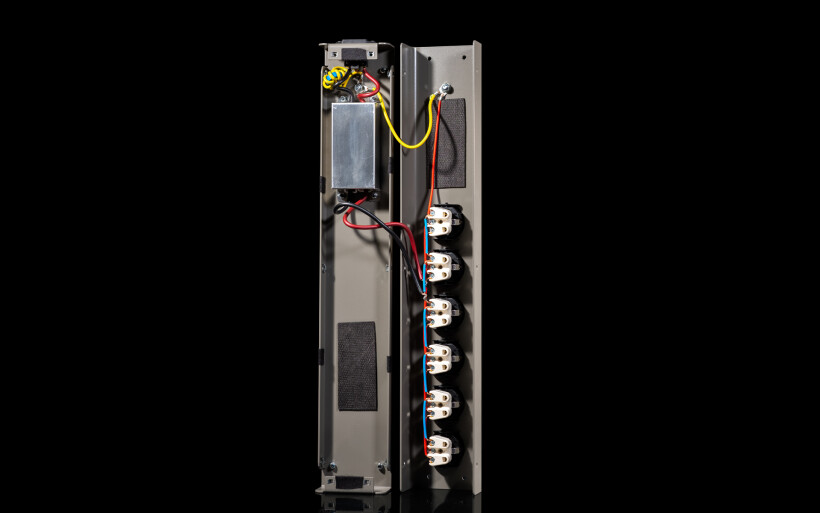 Zavfino’s wiring and custom-made filter are two key aspects that set Intrada S6 apart from its sibling available under the Enerr flag. The former’s double filtering block inside a steel screen incorporates seven nanocrystalline cores and one oil cap, to suppress differential and common noise by max. 30dB. This module was designed to withstand 25A of current (…in spite of the C13/15 standard’s theoretical limit of 10A), and its gentle waveform characteristic goes from 10kHz up to 1MHz. Intrada S6’s internals say nay to PCBs and soldered joints, in favor of screwed down connections. Solder visible in two places is used as glue. Two monocrystalline copper conductive veins in-between outlets are cleverly bent single wire cuts that increase rating of these sockets to 16A. This report’s loaner arrived wrapped in foil and in-between foam forms inside a standard issue cardboard. A mains tester was the only accessory in the box, but useful.
Zavfino’s wiring and custom-made filter are two key aspects that set Intrada S6 apart from its sibling available under the Enerr flag. The former’s double filtering block inside a steel screen incorporates seven nanocrystalline cores and one oil cap, to suppress differential and common noise by max. 30dB. This module was designed to withstand 25A of current (…in spite of the C13/15 standard’s theoretical limit of 10A), and its gentle waveform characteristic goes from 10kHz up to 1MHz. Intrada S6’s internals say nay to PCBs and soldered joints, in favor of screwed down connections. Solder visible in two places is used as glue. Two monocrystalline copper conductive veins in-between outlets are cleverly bent single wire cuts that increase rating of these sockets to 16A. This report’s loaner arrived wrapped in foil and in-between foam forms inside a standard issue cardboard. A mains tester was the only accessory in the box, but useful.
Sound
Innuos Statement handled storage/transport, then a LampizatOr Pacific DAC (KR Audio T-100/Living Voice 300B + KR Audio 5U4G Ltd. Ed.) passed signal to a Trilogy 915R/995R set connected via a Boenicke S3 speaker cable either to sound|kaos Vox 3afw or Boenicke Audio W11 SE+ speakers. Interconnects used were Boenicke Audio IC3 CG and XLRs which I DIY-ed. All key hardware was powered by Boenicke Audio Power Gate distributor box plus its three captive M2 cords and two LessLoss C-MARCs. Here Intrada S6, iFi audio PowerStation and GigaWatt LC-3 EVO cord came into play as well. The USB chain included only one Mercury3.0 USB cable. A set of external LessLoss Firewall for Loudspeakers modules complimented both speaker sets, while a Fidelizer EtherStream was in-between my Linksys WRT160N router and Innuos Statement server. ISOL-8’s Prometheus PSU connected to the router and network switch.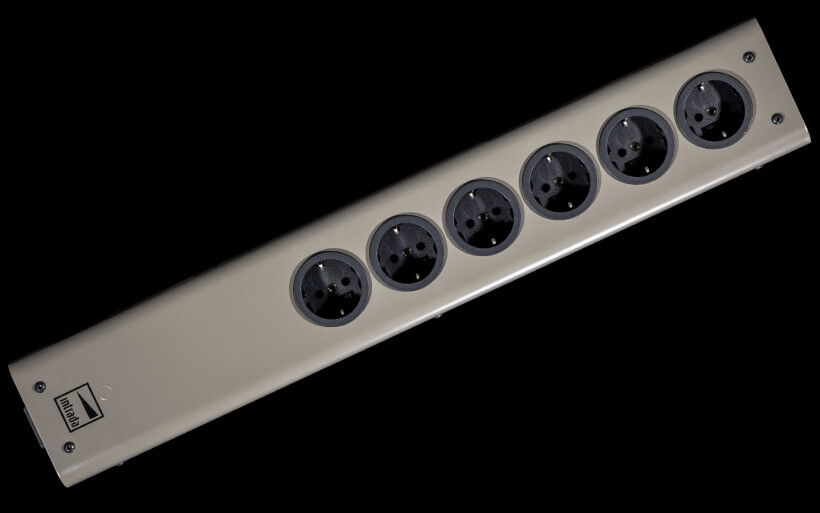 To review Intrada S6, my setup’s main components had to split into two groups; analog and digital. Boenicke Power Gate fronted the 915R/995R set and linear PSU, whilst my streamer and DAC were connected to either today’s arrival or iFi’s PowerStation. Later on this order was reversed. That way after each swap I didn’t have to shut down the entire system but just half its inhabitants. GigaWatt LC-3 EVO married to the main wall outlet was on rotation between Intrada’s and iFi’s distributors. Their sockets were probed and labeled just to avoid any mistakes, and LessLoss C-MARC cords landed in the same outlets. All in all, I had to swap three power cables to move from the S6 to its competitor, and my investigation started from digital bits as the most susceptible to all power reworks.
To review Intrada S6, my setup’s main components had to split into two groups; analog and digital. Boenicke Power Gate fronted the 915R/995R set and linear PSU, whilst my streamer and DAC were connected to either today’s arrival or iFi’s PowerStation. Later on this order was reversed. That way after each swap I didn’t have to shut down the entire system but just half its inhabitants. GigaWatt LC-3 EVO married to the main wall outlet was on rotation between Intrada’s and iFi’s distributors. Their sockets were probed and labeled just to avoid any mistakes, and LessLoss C-MARC cords landed in the same outlets. All in all, I had to swap three power cables to move from the S6 to its competitor, and my investigation started from digital bits as the most susceptible to all power reworks. Although Intrada S6’s core job and regular visual doesn’t imply anything exotic, this specialist case promises quite the sonic performance. Its kind is well known for dynamic prowess after all. In pursuit of this appealing trait many seasoned enthusiasts sacrifice safety measures. Unsurprisingly they also consider power conditioners with protection circuitry inherently embedded as slow versus products such as S6. My Gigawatt PC-3 SE EVO+ doesn’t sound sluggish per se, but Boenicke’s reference distributor box just next to it struck me as noticeably quicker. Several similar comparisons in recent years led me to believe that top speed and safety are mutually exclusive things indeed, but don’t take my word for it. It so happens that minimalist passive distributors are more popular among the industry people than oftentimes far dearer power conditioners. Just sayin’.
Although Intrada S6’s core job and regular visual doesn’t imply anything exotic, this specialist case promises quite the sonic performance. Its kind is well known for dynamic prowess after all. In pursuit of this appealing trait many seasoned enthusiasts sacrifice safety measures. Unsurprisingly they also consider power conditioners with protection circuitry inherently embedded as slow versus products such as S6. My Gigawatt PC-3 SE EVO+ doesn’t sound sluggish per se, but Boenicke’s reference distributor box just next to it struck me as noticeably quicker. Several similar comparisons in recent years led me to believe that top speed and safety are mutually exclusive things indeed, but don’t take my word for it. It so happens that minimalist passive distributors are more popular among the industry people than oftentimes far dearer power conditioners. Just sayin’. Prior to revealing whether Intrada S6 followed its kind on performance or not, it’s necessary to properly introduce its unique sparring partner. iFi audio PowerStation is a power bar designed to guard connected hardware and indicate any issues with grounding and polarity. Its active internals also measure signal from the mains, then inject artificially generated oppositely phased identical wave, and effectively cancel/reduce incoming noise a’la ANC tech for headphones. Although iFi’s product has the upper hand as far as utilities go and very clearly at that, its unmistakable conditioner-alike flavor is its most distinctive sonic upshot, and very useful given today’s context.
Prior to revealing whether Intrada S6 followed its kind on performance or not, it’s necessary to properly introduce its unique sparring partner. iFi audio PowerStation is a power bar designed to guard connected hardware and indicate any issues with grounding and polarity. Its active internals also measure signal from the mains, then inject artificially generated oppositely phased identical wave, and effectively cancel/reduce incoming noise a’la ANC tech for headphones. Although iFi’s product has the upper hand as far as utilities go and very clearly at that, its unmistakable conditioner-alike flavor is its most distinctive sonic upshot, and very useful given today’s context.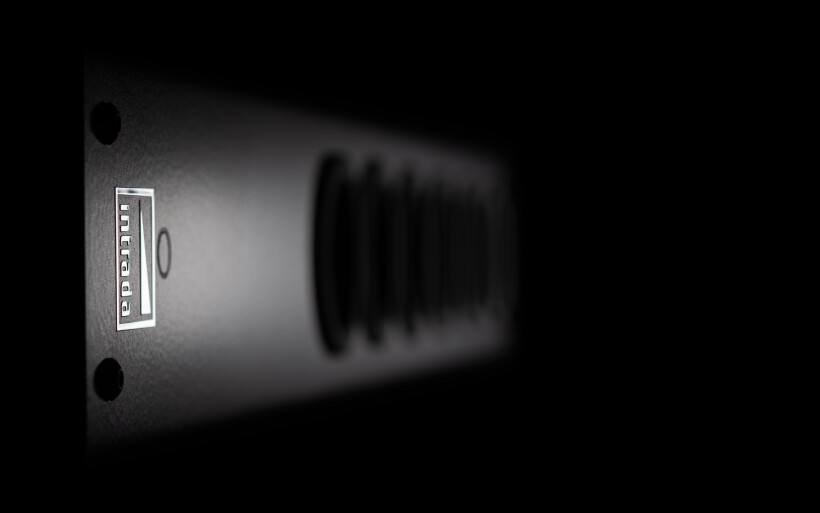 Since Michał spared no details about S6’s topology and associated traits, I had a firm idea of what to expect long before the loaner’s arrival. Intrada’s founder had to be after speedy open illuminated power fiend priced to sell, so iFi’s quite oppositely profiled PowerStation was the ideal opponent for it. I was able to grasp what today’s specimen did and how after mere two quick swaps between both products. All the early guessing was also correct, S6 sounded like a quality passive bar and no less. It emphasized quickening, propulsion, air amount, openness, clarity, outlines, agility, directness and the lot. iFi’s product on the other hand was calmer, thicker and slower as expected, but also similarly open in the sense of spatial scale, a touch blacker on background and with somewhat wider more saturated tonal palette.
Since Michał spared no details about S6’s topology and associated traits, I had a firm idea of what to expect long before the loaner’s arrival. Intrada’s founder had to be after speedy open illuminated power fiend priced to sell, so iFi’s quite oppositely profiled PowerStation was the ideal opponent for it. I was able to grasp what today’s specimen did and how after mere two quick swaps between both products. All the early guessing was also correct, S6 sounded like a quality passive bar and no less. It emphasized quickening, propulsion, air amount, openness, clarity, outlines, agility, directness and the lot. iFi’s product on the other hand was calmer, thicker and slower as expected, but also similarly open in the sense of spatial scale, a touch blacker on background and with somewhat wider more saturated tonal palette.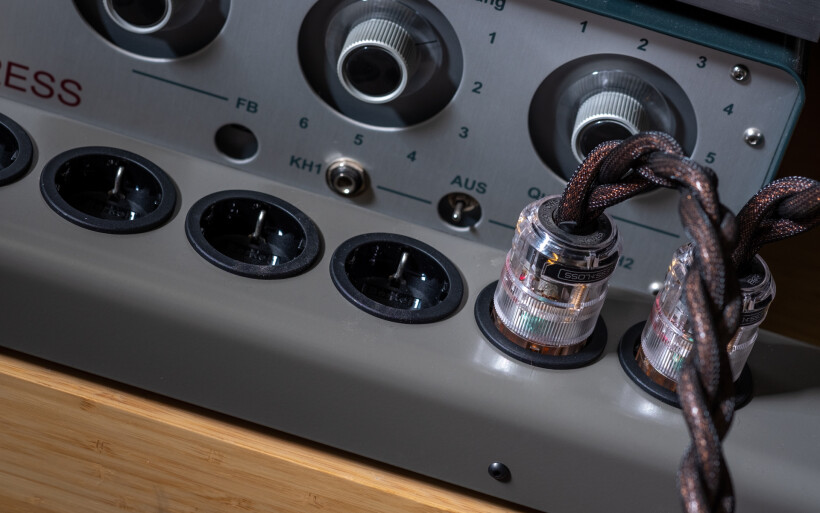 Easily noticeable key disparities between products were logical if not predictable, and sensibly different bass execution was probably the biggest of them all. Intrada’s product naturally aspirated for agility had this range noticeably slimmer, extended to reach a bit deeper, more fierce, ripped and tighter for greater overall composure, whilst all vocal and instrumental renders had my attention on their outlines more than internal filler. PowerStation reversed this order by calmer plushier drive geared for textural pleasure more than torque, and also had all virtual shapes’ internal fleshiness pronounced a fair bit more than their frames, which was absolutely fine.
Easily noticeable key disparities between products were logical if not predictable, and sensibly different bass execution was probably the biggest of them all. Intrada’s product naturally aspirated for agility had this range noticeably slimmer, extended to reach a bit deeper, more fierce, ripped and tighter for greater overall composure, whilst all vocal and instrumental renders had my attention on their outlines more than internal filler. PowerStation reversed this order by calmer plushier drive geared for textural pleasure more than torque, and also had all virtual shapes’ internal fleshiness pronounced a fair bit more than their frames, which was absolutely fine.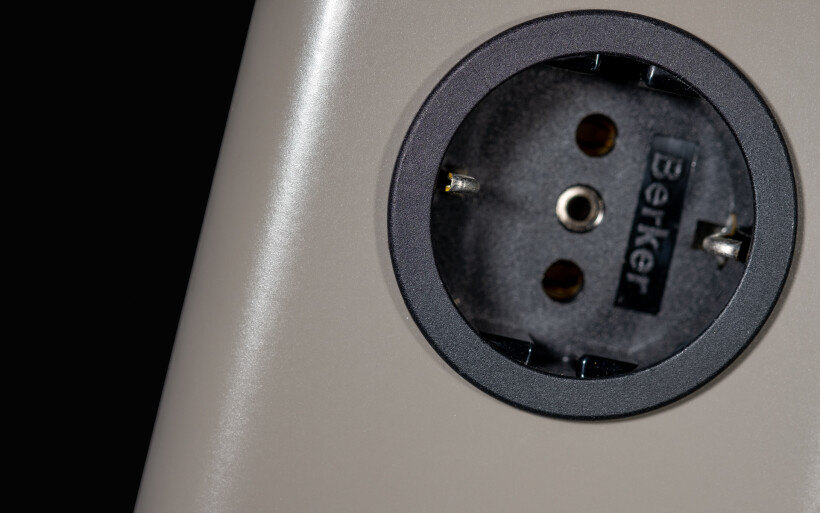 It’s tempting to finish this chapter here by labeling Intrada’s newcomer as potent speed booster, and iFi’s bar as a nice injector of color and charm. However, this would leave these quite oppositely profiled distributors as situational products, and on the fundamental level they’re not. I’ve found them equals on sheer sound quality, refinement and overall balance. Neither was S6 texturally pale, abnormally chiseled, piercing or itchy on top, nor was PowerStation fuzzy, veiled, syrupy, stuffy and excessively warm. The way how both contestants avoided going extreme to my ears is the accurate indicator how mature their sonic profiles are. Neither struck me as flashy or overcooked and each worked very well in my setup.
It’s tempting to finish this chapter here by labeling Intrada’s newcomer as potent speed booster, and iFi’s bar as a nice injector of color and charm. However, this would leave these quite oppositely profiled distributors as situational products, and on the fundamental level they’re not. I’ve found them equals on sheer sound quality, refinement and overall balance. Neither was S6 texturally pale, abnormally chiseled, piercing or itchy on top, nor was PowerStation fuzzy, veiled, syrupy, stuffy and excessively warm. The way how both contestants avoided going extreme to my ears is the accurate indicator how mature their sonic profiles are. Neither struck me as flashy or overcooked and each worked very well in my setup.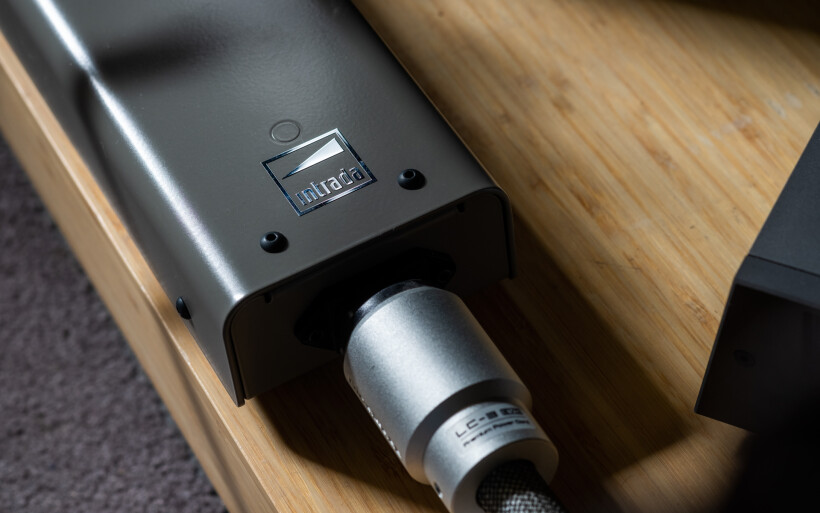 Since this review is about Intrada S6, one its sonic feature struck me as rather outstanding, especially given the price tag listed below. Many similarly profiled products eventually emerge as a bit dry, but the more working hours Michał’s bar had on its clock, the more its naturally quick precise voicing flourished into pleasantly organic and generous on color. Not for a second it felt skinny, hollow and shy on anything in particular. But most importantly, affordable hardware tends to flaunt with the biggest flashiest guns right away, but in time they shrink and one’s introductory infatuations also evaporate in the process. In this context S6 effectively reversed this order by keeping its highest cards for later, which to my ears was the clear sign of its admirable seasoning on top of the already great performance.
Since this review is about Intrada S6, one its sonic feature struck me as rather outstanding, especially given the price tag listed below. Many similarly profiled products eventually emerge as a bit dry, but the more working hours Michał’s bar had on its clock, the more its naturally quick precise voicing flourished into pleasantly organic and generous on color. Not for a second it felt skinny, hollow and shy on anything in particular. But most importantly, affordable hardware tends to flaunt with the biggest flashiest guns right away, but in time they shrink and one’s introductory infatuations also evaporate in the process. In this context S6 effectively reversed this order by keeping its highest cards for later, which to my ears was the clear sign of its admirable seasoning on top of the already great performance. Once all critical auditions were in the past, Intrada’s product had to at least briefly compare to my 40x dearer Boenicke power bar just to see what happens. The latter rendered more tangible vocal outlines on noticeably spookier and more generously oxygenated backdrop. Every shape, nuance and spark it projected finer, clearer and longer on decay where it applied, and also was more impactful, complex and even quicker. Although the Swiss clearly had the upper hand on overall sonic might and its asking price reflects it rather well, after several back and forths Intrada’s general sonic footprint emerged as tailored for the same virtues. As such it didn’t collapse past disengaging its rival, which was quite the achievement on its own right, and the most important takeaway for me personally.
Once all critical auditions were in the past, Intrada’s product had to at least briefly compare to my 40x dearer Boenicke power bar just to see what happens. The latter rendered more tangible vocal outlines on noticeably spookier and more generously oxygenated backdrop. Every shape, nuance and spark it projected finer, clearer and longer on decay where it applied, and also was more impactful, complex and even quicker. Although the Swiss clearly had the upper hand on overall sonic might and its asking price reflects it rather well, after several back and forths Intrada’s general sonic footprint emerged as tailored for the same virtues. As such it didn’t collapse past disengaging its rival, which was quite the achievement on its own right, and the most important takeaway for me personally.
Summary
Intrada’s first speaker set recently reviewed here was quite the portfolio opener with precisely defined unique sonic goals. Its founder Michał Gogulski knew well how to turn them into reality and land such a product, and the same thing he did just now with his no less accomplished power distributor.
It goes without saying that Intrada’s latest won’t do any favors to your living room’s décor, but its robustness is exceptional and assembly is very good. In hand S6 instantly feels like a polished affair only a manufacturer knee-deep into such hardware could execute. Its flat steel chassis gets extra points on mechanical stability, six outlets should be enough for most customers, and no extras and safety measures on board is critical in scoring high where it matters most, so that’s hardly a con in my book.
I’m certain that this report’s purist case will fly under the radar of most people; newcomers to the hobby won’t see beyond its vanilla-flavored exterior, and seasoned aficionados will find its asking price suspiciously low. Their loss, Intrada S6 is a marvelous reminder that stout performance wrapped into an affordable package without any strings attached is possible. At least I haven’t found any, and that’s why Intrada’s six-socketed box would be my primary choice if I were after a power distributor on a budget. ‘Til next time!
Associated Equipment:
- Amplifier: Trilogy 995R
- DAC: LampizatOr Pacific (KR Audio T-100 / Living Voice 300B + KR Audio 5U4G Ltd. Ed.)
- Speakers: Boenicke Audio W11 SE+, sound|kaos Vox 3afw
- Transport: Innuos Statement
- Preamplifier: Trilogy 915R
- Speaker cables: Boenicke Audio S3, LessLoss C-MARC
- Speaker signal conditioning: LessLoss Firewall for Loudspeakers
- Interconnects: Boenicke Audio IC3 CG
- Power components: Gigawatt PC-3 SE EVO+/LC-3 EVO, LessLoss C-MARC, Boenicke Audio Power Gate, iFi audio PowerStation, ISOL-8 Prometheus
- USB components: iFi audio iGalvanic3.0, iFi audio micro iUSB3.0, 3x iFi audio Mercury3.0, iPower 9V
- Rack: Franc Audio Accesories Wood Block Rack
- Network: Fidelizer EtherStream, Linksys WRT160N
- Music: NativeDSD
Retail prices of reviewed components in EU (excl. tax):
- Intrada S6: €470
Manufacturer: Intrada


